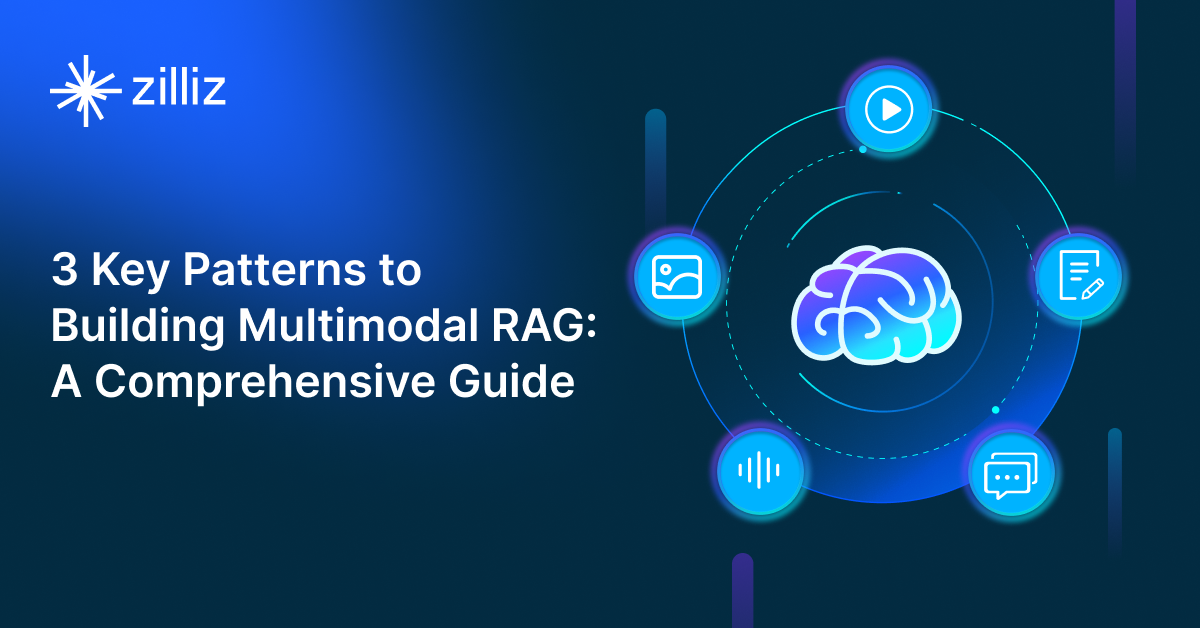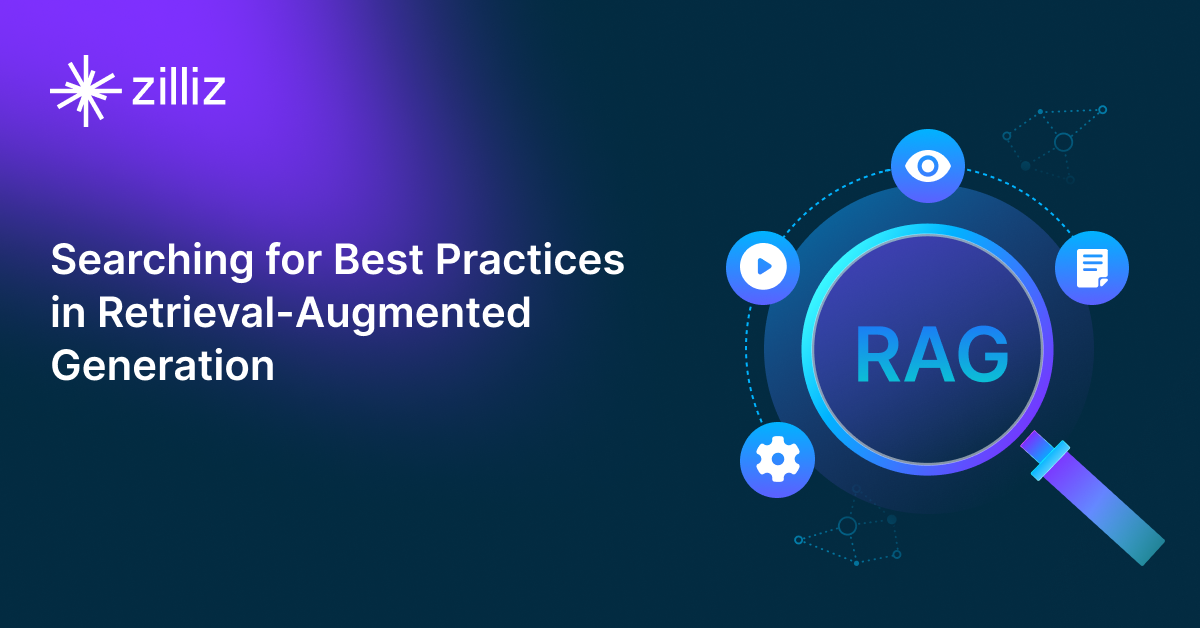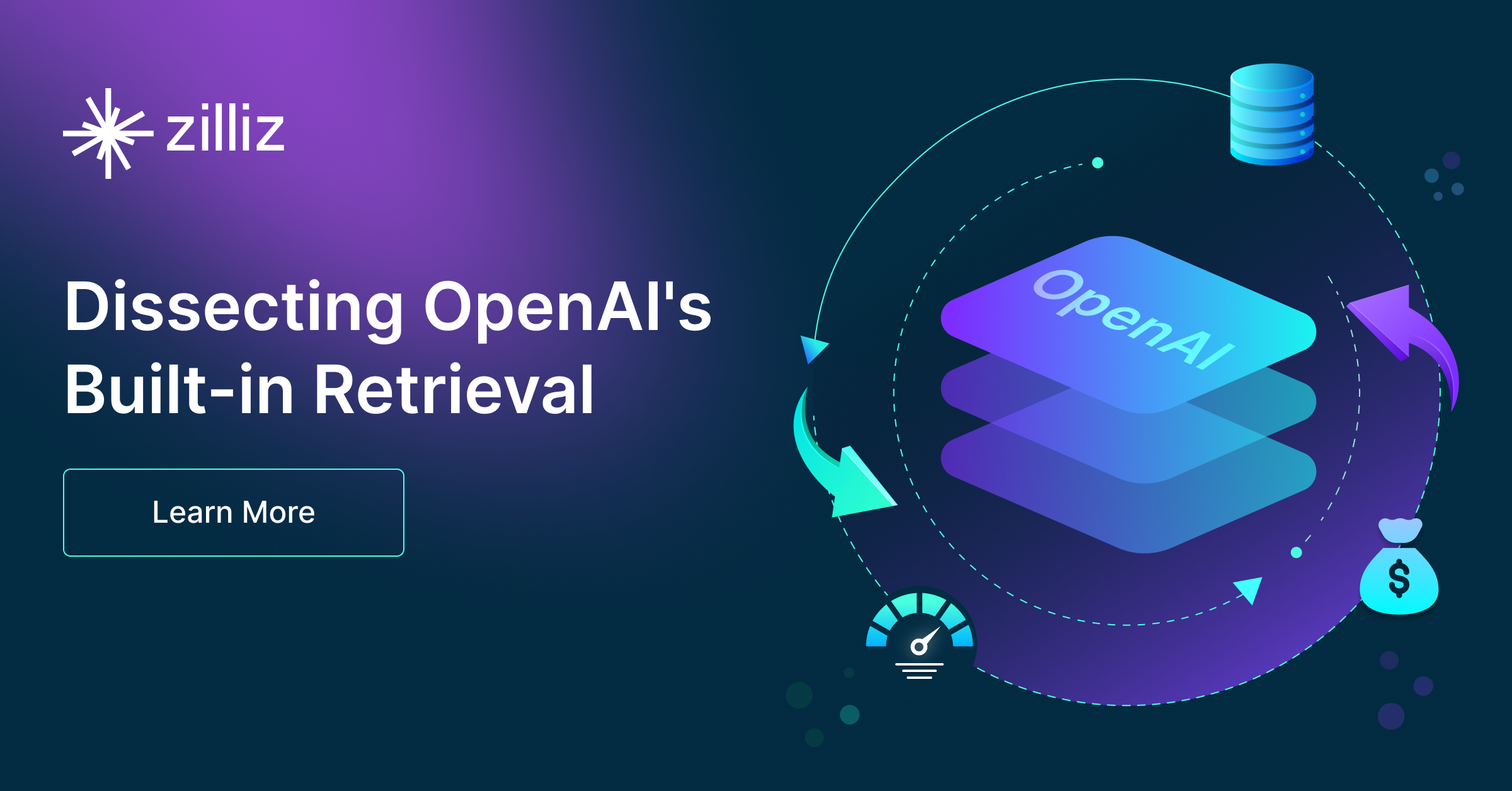Build RAG Chatbot with LangChain, Faiss, Mistral AI Ministral 8B, and Nomic Nomic Embed
Introduction to RAG
Retrieval-Augmented Generation (RAG) is a game-changer for GenAI applications, especially in conversational AI. It combines the power of pre-trained large language models (LLMs) like OpenAI’s GPT with external knowledge sources stored in vector databases such as Milvus and Zilliz Cloud, allowing for more accurate, contextually relevant, and up-to-date response generation. A RAG pipeline usually consists of four basic components: a vector database, an embedding model, an LLM, and a framework.
Key Components We'll Use for This RAG Chatbot
This tutorial shows you how to build a simple RAG chatbot in Python using the following components:
- LangChain: An open-source framework that helps you orchestrate the interaction between LLMs, vector stores, embedding models, etc, making it easier to integrate a RAG pipeline.
- Faiss: also known as Facebook AI Similarity Search, is an open-source vector search library that allows developers to quickly search for semantically similar multimedia data within a massive dataset of unstructured data. (If you want a much more scalable solution or hate to manage your own infrastructure, we recommend using Zilliz Cloud, which is a fully managed vector database service built on the open-source Milvus and offers a free tier supporting up to 1 million vectors.)
- Mistral AI Ministral 8B: This model is designed for high-performance generative tasks with 8 billion parameters, offering a balance of efficiency and capability. It excels in document generation, conversational AI, and creative content production. Ideal for developers seeking a powerful yet manageable model for sophisticated language applications without the resource demands of larger architectures.
- Nomic Nomic Embed: Nomic Embed is an advanced AI model designed for generating high-dimensional embeddings that capture semantic relationships within textual data. Its strengths lie in providing robust text representation, enabling superior performance in natural language understanding tasks such as information retrieval, sentiment analysis, and recommendation systems. Ideal for applications in content personalization and knowledge discovery, Nomic Embed streamlines the process of deriving insights from large datasets.
By the end of this tutorial, you’ll have a functional chatbot capable of answering questions based on a custom knowledge base.
Note: Since we may use proprietary models in our tutorials, make sure you have the required API key beforehand.
Step 1: Install and Set Up LangChain
%pip install --quiet --upgrade langchain-text-splitters langchain-community langgraph
Step 2: Install and Set Up Mistral AI Ministral 8B
pip install -qU "langchain[mistralai]"
import getpass
import os
if not os.environ.get("MISTRAL_API_KEY"):
os.environ["MISTRAL_API_KEY"] = getpass.getpass("Enter API key for Mistral AI: ")
from langchain.chat_models import init_chat_model
llm = init_chat_model("ministral-8b-latest", model_provider="mistralai")
Step 3: Install and Set Up Nomic Nomic Embed
pip install -qU langchain-nomic
import getpass
import os
if not os.environ.get("NOMIC_API_KEY"):
os.environ["NOMIC_API_KEY"] = getpass.getpass("Enter API key for Nomic: ")
from langchain_nomic import NomicEmbeddings
embeddings = NomicEmbeddings(model="nomic-embed-text-v1")
Step 4: Install and Set Up Faiss
pip install -qU langchain-community
from langchain_community.vectorstores import FAISS
vector_store = FAISS(embedding_function=embeddings)
Step 5: Build a RAG Chatbot
Now that you’ve set up all components, let’s start to build a simple chatbot. We’ll use the Milvus introduction doc as a private knowledge base. You can replace it with your own dataset to customize your RAG chatbot.
import bs4
from langchain import hub
from langchain_community.document_loaders import WebBaseLoader
from langchain_core.documents import Document
from langchain_text_splitters import RecursiveCharacterTextSplitter
from langgraph.graph import START, StateGraph
from typing_extensions import List, TypedDict
# Load and chunk contents of the blog
loader = WebBaseLoader(
web_paths=("https://milvus.io/docs/overview.md",),
bs_kwargs=dict(
parse_only=bs4.SoupStrainer(
class_=("doc-style doc-post-content")
)
),
)
docs = loader.load()
text_splitter = RecursiveCharacterTextSplitter(chunk_size=1000, chunk_overlap=200)
all_splits = text_splitter.split_documents(docs)
# Index chunks
_ = vector_store.add_documents(documents=all_splits)
# Define prompt for question-answering
prompt = hub.pull("rlm/rag-prompt")
# Define state for application
class State(TypedDict):
question: str
context: List[Document]
answer: str
# Define application steps
def retrieve(state: State):
retrieved_docs = vector_store.similarity_search(state["question"])
return {"context": retrieved_docs}
def generate(state: State):
docs_content = "\n\n".join(doc.page_content for doc in state["context"])
messages = prompt.invoke({"question": state["question"], "context": docs_content})
response = llm.invoke(messages)
return {"answer": response.content}
# Compile application and test
graph_builder = StateGraph(State).add_sequence([retrieve, generate])
graph_builder.add_edge(START, "retrieve")
graph = graph_builder.compile()
Test the Chatbot
Yeah! You've built your own chatbot. Let's ask the chatbot a question.
response = graph.invoke({"question": "What data types does Milvus support?"})
print(response["answer"])
Example Output
Milvus supports various data types including sparse vectors, binary vectors, JSON, and arrays. Additionally, it handles common numerical and character types, making it versatile for different data modeling needs. This allows users to manage unstructured or multi-modal data efficiently.
Optimization Tips
As you build your RAG system, optimization is key to ensuring peak performance and efficiency. While setting up the components is an essential first step, fine-tuning each one will help you create a solution that works even better and scales seamlessly. In this section, we’ll share some practical tips for optimizing all these components, giving you the edge to build smarter, faster, and more responsive RAG applications.
LangChain optimization tips
To optimize LangChain, focus on minimizing redundant operations in your workflow by structuring your chains and agents efficiently. Use caching to avoid repeated computations, speeding up your system, and experiment with modular design to ensure that components like models or databases can be easily swapped out. This will provide both flexibility and efficiency, allowing you to quickly scale your system without unnecessary delays or complications.
Faiss Optimization Tips
To enhance the performance of the Faiss library in a Retrieval-Augmented Generation (RAG) system, begin by selecting the appropriate index type based on your data volume and query speed requirements; for example, using an IVF (Inverted File) index can significantly speed up queries on large datasets by reducing the search space. Optimize your indexing process by using the nlist parameter to partition data into smaller clusters and set an appropriate number of probes (nprobe) during retrieval to balance between speed and accuracy. Ensure the vectors are properly normalized and consider using 16-bit or 8-bit quantization during indexing to reduce memory footprints for large datasets while maintaining reasonable retrieval accuracy. Additionally, consider leveraging GPU acceleration if available, as Faiss highly benefits from parallel processing, leading to faster nearest neighbor searches. Continuous fine-tuning and benchmarking with varying parameters and configurations can guide you in finding the most efficient setup specific to your data characteristics and retrieval requirements.
Mistral AI Ministral 8B optimization tips
Ministral 8B provides a balance between efficiency and reasoning power, making it a good mid-range choice for RAG applications. Optimize retrieval by leveraging hybrid search (combining vector and keyword search) to improve accuracy. Use prompt engineering techniques, such as structured input formatting and logical ordering of context, to enhance response quality. Adjust temperature (0.1–0.3) and top-k values to balance factual accuracy with creative flexibility. Implement response caching for commonly accessed queries to improve latency. If deploying at scale, use model parallelism to distribute workloads efficiently across multiple GPUs or nodes. Optimize memory management by using half-precision (FP16) or quantized models to improve throughput. Fine-tune retrieval granularity, ensuring that only the most relevant and concise context is included in each query.
Nomic Nomic Embed optimization tips
To optimize the Nomic Nomic Embed component in a Retrieval-Augmented Generation (RAG) setup, focus on fine-tuning your embedding model with domain-specific data to enhance contextual relevance. Implement efficient indexing strategies, such as using FAISS or Annoy, to speed up retrieval times without compromising accuracy. Experiment with dimensionality reduction techniques, like PCA or t-SNE, to decrease computational load while retaining essential semantic information. Regularly clean and preprocess your corpus to eliminate noise and improve embedding quality. Lastly, monitor embedding drift over time and update your embeddings periodically to ensure they reflect the latest knowledge in your target domain.
By implementing these tips across your components, you'll be able to enhance the performance and functionality of your RAG system, ensuring it’s optimized for both speed and accuracy. Keep testing, iterating, and refining your setup to stay ahead in the ever-evolving world of AI development.
RAG Cost Calculator: A Free Tool to Calculate Your Cost in Seconds
Estimating the cost of a Retrieval-Augmented Generation (RAG) pipeline involves analyzing expenses across vector storage, compute resources, and API usage. Key cost drivers include vector database queries, embedding generation, and LLM inference.
RAG Cost Calculator is a free tool that quickly estimates the cost of building a RAG pipeline, including chunking, embedding, vector storage/search, and LLM generation. It also helps you identify cost-saving opportunities and achieve up to 10x cost reduction on vector databases with the serverless option.
 Calculate your RAG cost
Calculate your RAG cost
What Have You Learned?
By now, you’ve unlocked the power of combining cutting-edge tools to build a RAG system that feels almost magical! You’ve seen how LangChain acts as the glue, orchestrating the entire pipeline with its flexible framework—connecting your data, models, and logic seamlessly. Faiss steps in as the lightning-fast vector database, enabling efficient similarity searches across your embeddings, while Nomic’s Embed model transforms text into rich, context-aware vectors that capture the nuances of your data. Then there’s Mistral AI’s Mixtral 8B, the powerhouse LLM that takes those retrieved snippets and crafts coherent, insightful responses, blending creativity with precision. Together, they form a dynamic RAG pipeline that’s greater than the sum of its parts, turning raw data into actionable knowledge. You’ve also picked up pro tips for optimizing performance, like tweaking chunk sizes and fine-tuning retrieval thresholds, and even learned about a free RAG cost calculator to keep your projects budget-friendly.
This tutorial isn’t just about following steps—it’s about empowering you to innovate. Imagine the applications you could build: smarter chatbots, research assistants, or personalized recommendation engines. The tools are here, the foundation is set, and your creativity is the only limit. So why wait? Dive into your next project with confidence, experiment with different datasets, play with parameters, and watch your ideas come to life. The future of AI-driven solutions is in your hands—start building, keep iterating, and let your RAG systems shine. The world’s waiting for what you’ll create next! 🚀
Further Resources
🌟 In addition to this RAG tutorial, unleash your full potential with these incredible resources to level up your RAG skills.
- How to Build a Multimodal RAG | Documentation
- How to Enhance the Performance of Your RAG Pipeline
- Graph RAG with Milvus | Documentation
- How to Evaluate RAG Applications - Zilliz Learn
- Generative AI Resource Hub | Zilliz
We'd Love to Hear What You Think!
We’d love to hear your thoughts! 🌟 Leave your questions or comments below or join our vibrant Milvus Discord community to share your experiences, ask questions, or connect with thousands of AI enthusiasts. Your journey matters to us!
If you like this tutorial, show your support by giving our Milvus GitHub repo a star ⭐—it means the world to us and inspires us to keep creating! 💖
- Introduction to RAG
- Key Components We'll Use for This RAG Chatbot
- Step 1: Install and Set Up LangChain
- Step 2: Install and Set Up Mistral AI Ministral 8B
- Step 3: Install and Set Up Nomic Nomic Embed
- Step 4: Install and Set Up Faiss
- Step 5: Build a RAG Chatbot
- Optimization Tips
- RAG Cost Calculator: A Free Tool to Calculate Your Cost in Seconds
- What Have You Learned?
- Further Resources
- We'd Love to Hear What You Think!
Content
Vector Database at Scale
Zilliz Cloud is a fully-managed vector database built for scale, perfect for your RAG apps.
Try Zilliz Cloud for Free


